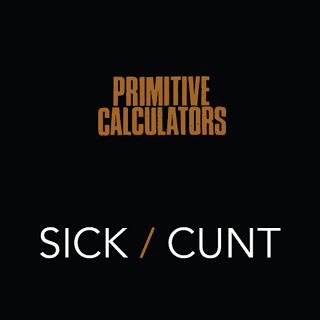 Primitive Calculators' no wave/synth-punk reputation rested primarily upon their self-released 1979 single "I Can't Stop It," and their involvement in Richard Lowenstein's 1986 film Dogs In Space. They were hoisted to appear at the Nick Cave-curated 2009 Australian ATP, though, and have since gigged with both Psychic TV and Lightning Bolt. This release features a song from their past and a new one. Both are powerfully obnoxious, if not as mercifully brief as I'd wish.
Primitive Calculators' no wave/synth-punk reputation rested primarily upon their self-released 1979 single "I Can't Stop It," and their involvement in Richard Lowenstein's 1986 film Dogs In Space. They were hoisted to appear at the Nick Cave-curated 2009 Australian ATP, though, and have since gigged with both Psychic TV and Lightning Bolt. This release features a song from their past and a new one. Both are powerfully obnoxious, if not as mercifully brief as I'd wish.
- Administrator
- Albums and Singles
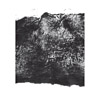 Although this is a split release, and the two artists inhabiting each side of the vinyl (or tape) are sonically quite different from each other, the fact that they both inhabit that nebulous void between metal, industrial and noise makes them a good pairing. While it is always clear what side of the release is playing, the two compliment each other quite well.
Although this is a split release, and the two artists inhabiting each side of the vinyl (or tape) are sonically quite different from each other, the fact that they both inhabit that nebulous void between metal, industrial and noise makes them a good pairing. While it is always clear what side of the release is playing, the two compliment each other quite well.
Mamiffer, the husband and wife duo of Aaron Turner and Faith Coloccia, contribute two rather different pieces on their side."Sophia" pairs Coloccia's understated piano playing with slow burning electronic noise.It is constantly changing and mutating, and eventually the piano and noise melts together into an oddly dissonant melody before closing on the harsher end.
"Tich√° Noc" leans more into the distorted end of the spectrum, with some delicate tones buried admits the static and feedback.Heavily treated vocals from both appear, and it even makes the leap into full on, bass-overdriven power electronics squall, but never for too long, and it continues to balance the more beautiful, melodic elements with the uglier, dirty ones.
On the other side, the enigmatic Pyramids (which also features Coloccia alongside a wider cast of musicians) goes for an occasionally prog-tinged, but overall more conventional electronic sounding piece in "This is One for Everyone".Stuttering canned rhythms lean into krautrock grooves at times, but the beats and lush synth passages never stand still, eventually transitioning over into improvised percussion and messy crashes.Given its unrelenting pace, it is disorienting at times, to say the least.
Even with both Pyramids and Mamiffer embracing a constantly evolving, soundtrack collage approach to their music, the results are quite different from one another.Mamiffer drifts more into the avant garde/musique concret world, while Pyramids brings the melody and rhythms of a more traditional rock band into this abstract composition.Their differing approaches work well together though, and each side of this album is the better due to its counterpart.
samples:
 
Read More
- Administrator
- Albums and Singles
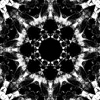 Following three albums worth of long-form drone pieces, Michael Page (Fire in the Head) has instead returned with a suite of more song-like compositions, with a slew of collaborators, including Jarboe and Danny Hyde. The final product is a diverse, yet cohesive set of tracks that function exactly how an album should.
Following three albums worth of long-form drone pieces, Michael Page (Fire in the Head) has instead returned with a suite of more song-like compositions, with a slew of collaborators, including Jarboe and Danny Hyde. The final product is a diverse, yet cohesive set of tracks that function exactly how an album should.
Small Doses/First Light
It is perhaps due to this diverse group of contributors that the album comes across as the most varied I have yet heard from Page.His penchant for elongated, dark ambient pieces is never far from view:even though it is more of a traditional album, three tracks still clock in at over the ten minute mark.The solo pieces, "Shedding the Husk" and "Bone to Beak (The Vultures Speak)" are indeed most in-line with his previous discography, the former especially being a slow-build horror piece of dramatic strings and noisy percussion, rising to an almost ambient peak before falling into brilliant static-heavy industrial banging.
Opener "Incantare" features both Jarboe and Troum, and both make their contributions quite clear.Troum's drone expertise is clearly present in the form of echoy reverb and dense, swirling electronics, but balanced out by processed excerpts of Jarboe's voice, understated and effective.Page, however, is the person who pulls it all together in a complex, constantly evolving composition.
Danny Hyde's contributions, "Carne[val]" and "Fools Circel 9wys" seem to be solo works, and stand out as sounding pretty significantly different than the rest of the album.Both are lo-fi stuttering collages of voice fragments and unidentifiable electronics.The former certainly embraces that carnival music vibe hinted at the title, in the form of dark pseudo-melodies that eventually fall into a chaotic digital noise fest at the end, while the latter ends up going for a more rhythmic structure.
The biggest departure is on "Beyond the Veldt", featuring former Hawkwind vocalist Bridget Wishart (coincidentally Nik Turner was a guest on last year's Aegri Somnia).The heavy reverb and electronic passages are shaped into a melancholy melody, with a stiff drum machine and Wishart’s voice concocting a unique take on a gothic shoegazey piece of music.For me, it is this perversion of conventionality that makes it the centerpiece of a great album.
Previous Sky Burial albums have always been exceptional pieces of dark ambient experimentation and drift, but There I Saw the Grey Wolf Gaping pulls those pieces together into what comes across as a more fully realized album.It is no slight against those previous works, but here it just all comes together exceptionally well.
samples:
 
Read More
- Administrator
- Albums and Singles
Since upsetting the techno multiverse with Man With Potential last year, ex-Yellow Swan Pete Swanson has tirelessly continued his exploration of the form, quickly breaking it down and moulding it in his image. Pro Style is the result of those experiments, and finds Swanson at his most explosive, with his archetypal searing synthesizer blasts directed over warehouse kicks worthy of the Downwards catalogue. This is possibly Swanson's most technoid investigation to date, but any 'mainstream' form is peppered with more than enough failure to put a smile on the faces of unconvinced Yellow Swans fans. Pro Style is far from Berlin's precise minimalism, instead taking a raw, hands on direction that we haven't heard in the genre for many years. Whether you're in the club or in the basement, Swanson's pounding kicks and (surprisingly) booming basses should keep the apocalypse at bay, for now at least.
More information can be found here.

Read More
- Administrator
- Albums and Singles
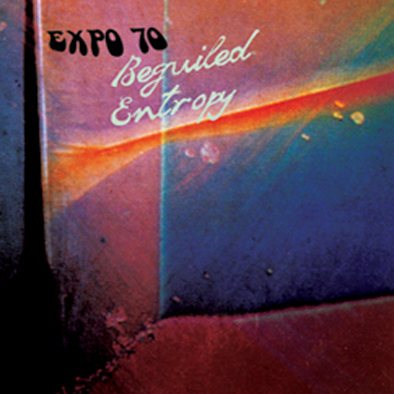 When I think of Justin Wright's Expo 70 project, I instantly think of two things: "improv" and "guitar."  That is something I probably need to cure myself of: while Beguiled Entropy certainly contains both of those elements, it so thoroughly transcends them in places that I completely forgot about Wright's chosen methods and tools.  This is an album of vision and focus that is far more evocative of nocturnal, neon-lit emptiness and menace than of a guy hunched over a battery of effects pedals.  In fact, this would have been the perfect soundtrack to Drive had Nicholas Winding Refn eschewed retro kitsch for stylized bleakness, paranoia, and retro-futurism.
When I think of Justin Wright's Expo 70 project, I instantly think of two things: "improv" and "guitar."  That is something I probably need to cure myself of: while Beguiled Entropy certainly contains both of those elements, it so thoroughly transcends them in places that I completely forgot about Wright's chosen methods and tools.  This is an album of vision and focus that is far more evocative of nocturnal, neon-lit emptiness and menace than of a guy hunched over a battery of effects pedals.  In fact, this would have been the perfect soundtrack to Drive had Nicholas Winding Refn eschewed retro kitsch for stylized bleakness, paranoia, and retro-futurism.
This album was originally recorded sometime last year following a recording hiatus, which somehow did not prevent Justin from churning out 13 other releases (by my count) between 2011 and now.  This seems to be one of his rare "major releases" though, as most of the others were cassettes, CDrs, or collaborations.  And no one would have the temerity to release a substandard or lackluster album on totally bad-ass-looking orange and blue swirled vinyl (at least, I would hope not).
The recurring element that holds the entire album together is a brooding, but relatively static, synth drone.  That seems like such a simple idea, but it turns out to be remarkably effective here, imbuing the album with a thematic cohesion and allowing Wright plenty of space in which to languorously work.  More importantly, he manages to use that relatively unvarying backbone to create five pieces that sound markedly different from one another.
For example, "Mark of the Rising Mantis" often sounds like a broken robot throwing a tantrum, while parts of "Luminous Traveler" could probably be mistaken for an instrumental stretch on a classic Pink Floyd album (owing mostly to its restrained, delay-heavy riffing).  "Sunseekers (Out of Diminished Light)" continues that neo-prog theme, but plunges even deeper into space, largely ditching any sort of rock-based structure in favor of some trippy, psyched-out synth burbling and distorted, reverb-heavy guitar soloing.
In general, however, I would say that Wright is most compelling when his songs are a bit more rigidly constructed and (comparatively) propulsive.  The first hint of this appears on the fourth piece, "Backmasking Deeper than Darkness," which continues the faux-Floyd, space rockism of its two predecessors, but escalates in intensity to a throbbing, hissing crescendo.  Justin's drum machine makes an even more prominent and welcome appearance in the album's wonderful closer, "Pulsing Rings of Ice."  Again, a deceptively simple idea is employed to powerful effect, as the relentlessly thumping beat feels like a jolt of late-album adrenaline after so much drifting psychedelia.
It also highlights something important, as it is the album's best and most memorable piece, but Wright's playing is extremely subdued.  With a simple beat around to do most of the heavy lifting, all Justin needs to do to make a piece work is establish a consistent and appealing mood.  I am not advocating laziness or anything, but it definitely seems like adding a strong rhythmic component goes a lot further in making a song immediate and memorable than hazy, psychedelic guitar improvisations (however good they are).
My sole issue with Beguiled Entropy is that there is still too much guitar soloing for my taste, but that is a pretty goddamn subjective problem to have, given that Wright's whole aesthetic is based primarily upon guitar improv.  Still, it sometimes feels like he is merely meandering or filling space rather than going somewhere purposeful.  In all other respects, however, this is quite an evocative and impressive album.  I was especially struck by how coherent and intelligently sequenced it all is, as these five pieces clearly belong together and cohere into a satisfying dynamic arc.
The pacing also works extremely well, as the few parts that tend to drag a bit are not nearly as irksome when experienced in the context of the entire album.  For example, some of the earlier pieces seem to lean a bit too heavily upon guitar solos when heard on their own, but perform a valuable function in the larger scheme of things (allowing the ominous mood to simmer for a while before ratcheting up the intensity).  While I would love for Justin to expand his musical palette a bit more, Beguiled Entropy is a remarkably absorbing and composed-sounding album for an unrepentant improvisor armed with little more than a synth and a guitar.
 
Read More
- Administrator
- Albums and Singles
 When Jim Haynes, head of the always fascinating Helen Scarsdale Agency, told me he would be releasing an almost pop record on the label, I was a bit surprised. Here is a label that, over the past 15 years, has perfected the sound of rusting, rotting audio. But with recent Ekin Fil releases hinting at a growing interest in musicality, the idea began to seem less bizarre. The first proper vinyl album from Nicole Carr (also known as Bloom Offering) fits perfectly in this niche. More conventional sounding than usual, but still experimental and challenging in its own way, it is a brilliant record that stands out among the best albums this year.
When Jim Haynes, head of the always fascinating Helen Scarsdale Agency, told me he would be releasing an almost pop record on the label, I was a bit surprised. Here is a label that, over the past 15 years, has perfected the sound of rusting, rotting audio. But with recent Ekin Fil releases hinting at a growing interest in musicality, the idea began to seem less bizarre. The first proper vinyl album from Nicole Carr (also known as Bloom Offering) fits perfectly in this niche. More conventional sounding than usual, but still experimental and challenging in its own way, it is a brilliant record that stands out among the best albums this year.
Probably the best reference point to describe the overall sound of Episodes is reminiscent of Suicide.Mostly in that Carr constructs slowly evolving layers of hypnotically repetitive electronics that tend to build unrelentingly, with her production and vocals giving a dark, sinister sheen to the whole thing.This is apparent right from the beginning of "Swallow Me Whole", with Carr’s distant, detached vocals spread atop a heavy kick drum, clanging snare, and brittle synth sequence."Fit of a God Complex" uses the same elements, but with a slower tempo and a drift towards greater abstraction at the end.
In addition to these more rhythm-centric pieces, Carr is no stranger to adding some melody to the mix as well.Bent voices and heavier beats may be at the core of "Imperfect Absence", but the depressive melodic progression that is blended throughout is the defining facet of a great song."Fishbowl" has a similarly melodic structure, but one that is a bit more uptempo in comparison, keeping things dynamic while still fitting within the overall sound of the album.The same goes for "Simple Math", which may begin in a very sparse place, packed with pitch shifted voices and Carr repeating the title of the song, but eventually locks into an faster tempo with some excellent arpeggiated synth sounds.
The whole record is amazing, but the pair of distinctly different songs that open the second side really drive home the variation and complexity that defines Bloom Offering."Venus Shrugged" is all distant, rattling thuds and vast, yet menacing spaces.Eventually Carr fleshes out the song a bit, but it is still an intentionally stripped down affair.This is immediately followed by "Out 2 Get U", which has some 1980s drum programming sounds befitting its Prince-esque titling, but the remainder is a nasty FM synth bass lead and hard, thumping beat.It may be a bit less experimental than some of the other songs here, but it is so well done, and with such a dirty, aggressive production to it, that it makes for a high point of the record.
While compared to some of the other releases on the label, Episodes may seem rather conventional, but Nicole Carr's take on stripped down synth menace and aggressive is just as challenging in its own right.It is a catchy and memorable synth heavy album, but one that carries a lot of its own emotional weight and darkness.It is this combination that made it stand out so strongly and has placed it among the best records of 2018 in my eyes.
Read More
- Administrator
- Albums and Singles
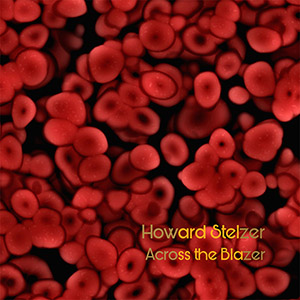 The latest work from New England's legendary tape manipulator (presented on CD, in a bit of irony) is another work in a series of releases that reflects his more meditative, contemplative side. Like the somewhat recent Dawn Songs tape, Across the Blazer features Stelzer using his array of tape machines to construct vast expanses of sound, less about bent motors or mangled tape, but more the enveloping warmth of analog imperfection. The end product is surprisingly inviting and relaxing, words that are rarely apt descriptors of something generally labeled as "noise".
The latest work from New England's legendary tape manipulator (presented on CD, in a bit of irony) is another work in a series of releases that reflects his more meditative, contemplative side. Like the somewhat recent Dawn Songs tape, Across the Blazer features Stelzer using his array of tape machines to construct vast expanses of sound, less about bent motors or mangled tape, but more the enveloping warmth of analog imperfection. The end product is surprisingly inviting and relaxing, words that are rarely apt descriptors of something generally labeled as "noise".
Across the Blazer is two lengthy pieces Stelzer composed over a two year period, with some live source material carefully blended in, but where the studio treatments end and the live improvisations begin are anything but distinct."Selective Memory (You Never Know Absolutely Quite Where You Are)" has Stelzer leading off with a deep, far off rumble akin to the vibrations of a tape deck motor, but the sound is eventually shaped into that of a murky, deep sea-like bubbling.After allowing the piece to develop, Stelzer patiently introduced passages of pleasant, soothing white noise like layers.Other than the densely piled, telltale hiss of analog tape, the material he is working from is largely blurry and intentionally out of focus.
Ostensibly it is a noise composition, but the final product is anything but jarring or unpleasant to the ears.Instead it is a consistent, expansive blanket of sound, with the extreme frequencies rolled off to smooth out any sharp or rough patches.Eventually the light, sustained noise is faded back out as delicately as it was brought in, leaving only the low-end rumble that was there from the onset.
For the nearly 28 minute "Across the Blazer," the live sourcing is a bit more overt from incidental location recordings that open the piece, although only briefly.Like "Selective Memory," Stelzer focuses less on collages, edits, or jolting sounds and instead continues the pleasant, enveloping sounds culled from tape.Compared to "Selective Memory," the material he works from here is more tonal in nature, almost sounding like an overly saturated, extremely worn cassette of a symphonic recording with only the barest essentials of tone remaining.
Again, hissing midrange noise becomes the focus, but also again in an ear pleasing, placid context.The unrelenting approach is not far removed from the harsh noise wall subgenre, but with all of the harshness excised.Instead it is like the sonic equivalent of gradually being engulfed by a gigantic wave, but instead of frigid liquid, it is like warm bathwater and happening in slow motion.Throughout the composition the mix continues to build and pile up, but stays firmly rooted in that gentle, beautiful context before lightly fading away into shimmering space.I have yet to find a work from Howard Stelzer that I have not vigorously enjoyed, and Across the Blazer is no exception to that pattern of releases.Of course I am still looking forward to hearing more of his dynamic, collage like works, but this softer, gentler side to his art is just as amazing.
Read More
- Administrator
- Albums and Singles
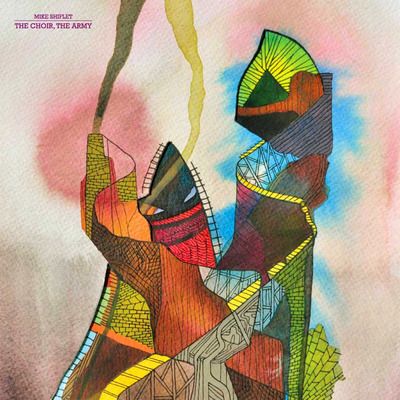
As one of the world's foremost sound-artists, Mike Shiflet has released music on labels as diverse as Type, Homophoni, Digitalis Limited and 905 Tapes. It gives Under The Spire great pleasure to welcome him into our fold for his outstanding new LP The Choir, The Army.
It can be hard to keep track of Mike Shiflet. Already on his quadrillionth release of the year – and his fourth in the space of a couple of weeks – the prolific drone genius touches down at Under The Spire to give us The Choir, The Army. How he maintains such extraordinarily high quality is beyond us, but we're happy to announce The Choir, The Army as being one of his finest outings yet. From the queasy Golem gurgles that open '1917' to the spectral drift of 'Inching' and the squealing noise terror of 'Attrition', Shiflet covers all bases and blends them to form a coherent journey through a sound world that soothes as often as it startles. All the while, beneath and behind, subtle pulses, static crackles and clean, clear washes of pure atmosphere create swarming rivulets that crash, calm and reach a flooded zenith with 'Yonder', a broke-down 'n' blue violin paean to distant memories drowned in glorious liquid sound.
This limited edition LP is restricted to just 250 copies on purple vinyl. The first 18 orders will include a free CD containing exclusive material. Pre-order here *Ships mid-late October*
Read More
- Administrator
- Albums and Singles
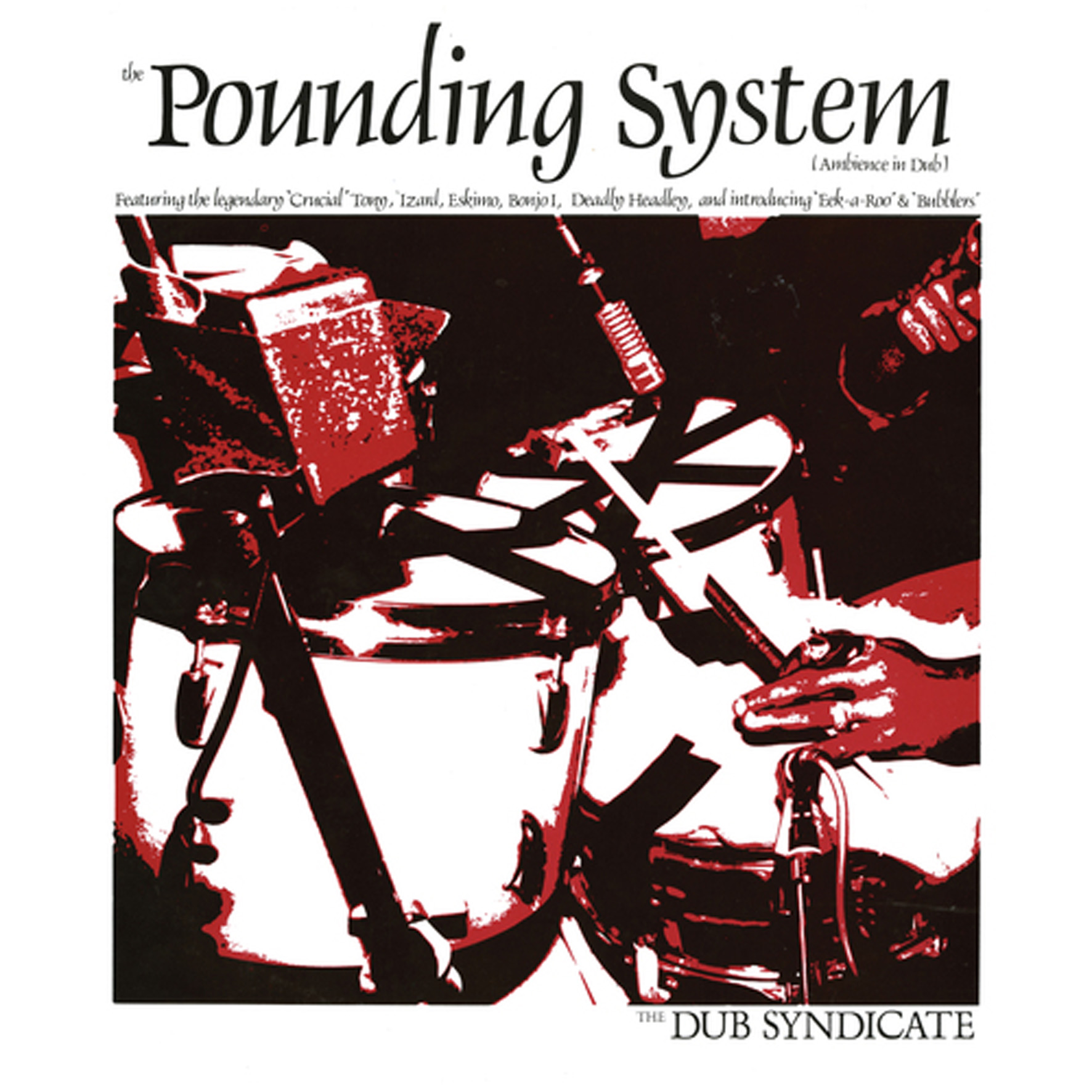 Newly reissued, this 1982 debut from Adrian Sherwood’s eclectic dub project is an ambitious and occasionally perplexing affair. The album’s subtitle, "Ambiance in Dub," goes a long way towards explaining the unusual and embryonic aesthetic, as does the fact that it was recorded by a revolving cast of guest musicians during a fortuitous window at a well-equipped studio: these are very simple and stripped-down bass-driven songs that leave plenty of room for each individual element to breathe. That is ideal for Sherwood’s experiments with reverb and mic placement, which seem to be The Pounding System's raison d’être: this is very much a playground for Sherwood’s production and recording wizardry. I suppose that could be said of all dub, but it feels like Sherwood is animating skeletons rather than deconstructing complete, fully formed songs. To my ears, Dub Syndicate's later, more layered work holds up much better than the semi-traditional dub reggae found here, but The Pounding System is a pleasant (if uneven) teaser for the more substantial work on the horizon.
Newly reissued, this 1982 debut from Adrian Sherwood’s eclectic dub project is an ambitious and occasionally perplexing affair. The album’s subtitle, "Ambiance in Dub," goes a long way towards explaining the unusual and embryonic aesthetic, as does the fact that it was recorded by a revolving cast of guest musicians during a fortuitous window at a well-equipped studio: these are very simple and stripped-down bass-driven songs that leave plenty of room for each individual element to breathe. That is ideal for Sherwood’s experiments with reverb and mic placement, which seem to be The Pounding System's raison d’être: this is very much a playground for Sherwood’s production and recording wizardry. I suppose that could be said of all dub, but it feels like Sherwood is animating skeletons rather than deconstructing complete, fully formed songs. To my ears, Dub Syndicate's later, more layered work holds up much better than the semi-traditional dub reggae found here, but The Pounding System is a pleasant (if uneven) teaser for the more substantial work on the horizon.
Sherwood’s ensemble for this early incarnation changes significantly from song to song and is a bit bewildering and incestuous, as almost everyone has some kind of alias and some degree of prior association with On-U sound.The core of the group is essentially Creation Rebel though (Sherwood did much of his early production work with them).Their guitarist, Crucial Tony, proves to be especially worthy of his name, as his bass lines form the bedrock of much of this album.In fact, roughly half of these pieces seem like Tony vamping on a bass riff along with either his Creation Rebel bandmate Eskimo or Divided Roots' Donald "Eek-a-Roo" Campbell.Even when Lizard Logan handles the bass duties, Crucial Tony is often still credited as a songwriter–he has his fingers in everything.Notably, Eskimo is a bit of a Dub Syndicate fixture as well, returning on some later records, but The Pounding System is the only album recorded before Style Scott claimed the stool and became a central protagonist in everything to follow.In any case, The Pounding System definitely suffers a bit from the hyper-limited "rhythm section only" palette, as "Humorless Journalist Works to Rules" is essentially just a one-riff bass and drum jam punctuated by some occasional wild production flourishes.Even several of the more fleshed-out songs are only embellished by a couple of major chords, which leaves me thirsty for literally anything else to turn up. Some vocals would have been especially welcome, but most of the excitement and variety comes from either African Head Charge's clattering percussion or a couple of saxophone cameos.In particular, Mr. Flesh's ghostly, reverb-swathed melody hook on "Pounding Systems" makes that piece a stand-out, but Jamaican session legend Deadly Headley makes "Don't Care About Space Invaders Machines" a highlight as well with his charmingly breezy melodies.
Unfortunately, the drums on this record are major sticking point for me, as booming rock drums are not ideal for maintaining dub's smoky, elegantly blurred spell.I doubt the drummers themselves were to blame though, as this was very much Sherwood’s show and I have heard Eskimo play more fluidly elsewhere.Regardless of who is behind the kit for The Pounding System, the drums almost exclusively stick to a plodding mid-paced boom-bap, which admittedly leaves a lot of space between kick drum and snare hits for dubby cymbal flourishes and clattering fills.It also leaves a lot of room for every single snap or thump to reverberate, which Sherwood seemed quite fond of during this period: big, thundering drums with a long decay.That certainly allows Sherwood plenty of room to work his magic, but it also results in a somewhat leaden feel that feels completely antithetical to the heady grooves of classic dub.That is the fundamental tragedy of this release: Sherwood is trying his damnedest to put on a dazzling showcase, yet the album is kind of stuck in neutral because there is not a hell of a lot happening melodically, harmonically, or rhythmically beyond the barest bones of reggae.There is just not a lot of character here, as many of these songs feel like hurriedly composed workmanlike facsimiles of quality reggae rather than the real thing.Whether that was due to the circumstance or whether Sherwood simply got much better at this later is hard to say.What is clear is that the best dub albums are almost always the ones where a great producer takes on great songs or a great band, not the ones where a producer has carte blanche to indulge his every whim from the ground up.
That said, there are still a couple of head-turning moments to be found on the album, most notably "Crucial Tony Tries to Rescue the Space Invaders," which boasts both the most fluid, absorbing bass groove on the album and an extremely cool crescendo of reverberating shudders and squelches.It is not radically different from some other pieces, but the execution is on an entirely different plane, as Sherwood keeps things at a perfect simmer and periodically lets the drums drop put altogether.It is definitely Sherwood’s zenith for deftly juggling dynamics while maintaining both a healthy bit of unpredictability and forward motion (for this record, at least).Curiously, Dub Syndicate seem to be at their best only when directly paying homage to Space Invaders (and/or needling Scientist), as "Don't Care About Space Invaders Machines" is the album’s most overly melodic and vibrantly percussive piece.Also, Sherwood himself contributes some nice space-y electronics.  As for the rest of the album, a lot of it sounds like some members of a professional reggae band idly testing some new ideas in a practice space while they wait for the rest of the band to show up (the good songs sound like what happens when they finally do).Perplexingly, a few of these pieces are actually cannibalized classics from the On-U Sound catalog (Bim Sherman’s "Across The Red Sea" and Prince Far I’s "Bedward the Flying Preacher"), but they go through a kind of reverse alchemy and emerge as less compellings shadows of their former selves.Too much was carved away, frankly, and Sherwood’s studio pyrotechnics could not do all of the heavy lifting on its own–his instincts had not quite caught up with his technique at this stage of the game.Or maybe they had, as Sherwood produced those better versions too–perhaps this project was initially a flight of pure indulgence that later grew into something more.Either way, there is a decent amount to like here, but The Pounding System is also evidence that Adrian Sherwood did not instantly spring into being as a fully formed cultural visionary.
 
Read More
- Administrator
- Albums and Singles
 Hampson released the exceptional Répercussions earlier this year, his first full length since 2008's Vectors. Now he has followed that up with two more albums, released simultaneously but presented separately. Even though he has become suddenly prolific, both albums are of the utmost quality, and have a distinctly different approach to sound between them.  And yes, fans of Loop and Main, there are guitars.
Hampson released the exceptional Répercussions earlier this year, his first full length since 2008's Vectors. Now he has followed that up with two more albums, released simultaneously but presented separately. Even though he has become suddenly prolific, both albums are of the utmost quality, and have a distinctly different approach to sound between them.  And yes, fans of Loop and Main, there are guitars.
Signaux is more in league with Hampson's acoustimatic work on Répercussions and Vectors:a microcosmic world of miniature sounds and alien melodies that flow splendidly into one another.Suspended Cadences, however, is more of a throwback to some of his earlier Main material, no doubt because of his reintroduction of guitars to that album.It is not a nostalgia trip though, it just sounds like the natural evolution of that sound.
Signaux is constructed solely from analog electronic sources and only utilizing computers as a point of recording and editing, so the sounds generated become a complete mystery, sounding like nothing and no one else.Even though the album is split into two side-long pieces, anyone familiar with Hampson's work knows that he rarely stands still, and these two are constantly evolving and changing, mixing dense complex passages with more airy ones..
"Signaux 1" began life as an eight channel installation work, mixed down into a standard stereo mix.Digital noises that lie somewhere between chirping crickets and skipping CDs blend with heart monitor beeps in the opening minutes, along with his trademark oddly filtered, tactile textures.The piece emphasizes texture and microscopic noises, occasionally with oddly resonating, elongated tones.It is the antithesis of drone, in that it never seems to stop moving like a living, breathing organism.
On the B side, "Signaux 2," composed just for this album, follows a similar template, although it does emphasize the tones a bit more than the textures, though both are equally represented.Rather than just tones, there is a rhythmic, occasionally percussive undercurrent in the piece and quite different from the one that preceded it, but it very much feels like the second half of the same work.
 
sample:
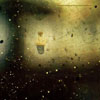
Also a two side-long track affair, Suspended Cadences is Hampson's long-awaited return to guitar, in addition to analog electronics.The use of guitar is immediately noticeable on "Suspended Cadences (Three)" (parts one and two were only performed live), although in execution it has a different quality entirely.Long, sprawling tones and a looming hum bear all of the hallmarks of the instrument, but reshaped and molded into something distinctly unique.Less about texture and more about tones, there is an alternating between shimmering, beautiful passages and ugly, distorted outbursts.
"Suspended Cadences (Four)" leans more into a minimalist drone, with subtly shifting guitar tracks layered together, slowly moving and evolving throughout.There is a fair amount of processed and effected electronic ambience to be had, but the focus is definitely on the subtle hums of a guitar amplifier, or the resonating buzz of feedback.
Releasing these two albums independently from one another makes a lot of sense, given that they are significantly different from one another in content and execution.The more electronic-focused Signaux may exhibit more variation and change in its approach, but the sonic character of Robert Hampson's guitar mangling never disappoints.Neither one is better than the other, largely because they are so different, but their differences also complement each other beautifully.
samples:
 
Read More
- Administrator
- Albums and Singles
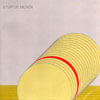 As the ambitious (and essential) reissue program by Die Stadt approaches conclusion, Tietchens' final release for Esplendor Geometrico's label, and last release of the 1980s, gets the expanded treatment. Heavily steeped in rhythmic loops and metallic reverb, it clearly shows the mark of his industrial period, but also of the abstract direction to come.
As the ambitious (and essential) reissue program by Die Stadt approaches conclusion, Tietchens' final release for Esplendor Geometrico's label, and last release of the 1980s, gets the expanded treatment. Heavily steeped in rhythmic loops and metallic reverb, it clearly shows the mark of his industrial period, but also of the abstract direction to come.
Pieces such as "Stimmen der Vernunft" and "Tollerort" exemplify this album:clattering, slightly cut-up rhythmic loops awash in reverb pounding atop one another, becoming more and more dissonant as they move on but never abandoning their underlying rhythmic structure."Aufs Maul" does this perhaps the best:interlocking loops and polyrhyhmic variations add an extra level of complexity and start to take on a Neubauten-like quality, but never sounding like anything but Tietchens.
Others deemphasize the percussion in lieu of rhythmic digital synth loops:"Aufstand der Massen" has the same rhythm usage as others, but focuses more on the disjointed and erratic synthesizer patterns, with the percussive crashes building to dramatic crescendos and then retreating once again."Mammi Money" mixes the two worlds, with a joint rhythm and synth loop that slowly comes apart as if the two pieces are going slowly out of sync before brilliantly becoming completely fragmented.
Amidst these longer tracks are a few shorter, more skeletal ones that lean even more into experimentalism, and the pure sound art Tietchens would soon embrace.The wet, echoy loops of "Pflegkammer Intern" sound as if it could be a field recording within a factory, while "Schacht Hera" loops dense, low-end heavy piano passages in a dramatic fashion.The twinkly synth blips and beeps of "Konvoy" actually recalls his earlier, synth pop Sky Records material, albeit with a darker and more modernized hue.
The four bonus tracks are from the same era, and unsurprisingly sound as if they could have been lifted off of the original album to begin with.Both "Krill-Schatten" and "Heimstatt des Betons" fit the mood, but largely ignore the rhythms in favor of more abstract textures, the latter even sounding more like tape loops of stringed instruments than the synthesized bleakness that preceded it."An Alle" is classic Tietchens of the era and a nod to the earliest industrial music:taut, spring reverberated crashes, taped voices, and a sense of dark ambient menace throughout.
While Asmus Tietchens has since moved into less rhythmic, more abstracted worlds of sound in his more contemporaneous works, I have always had a soft spot for the treated rhythms and looped samples of this era, which often resembles a distillation of the best elements of 1980s industrial.No vocals, no melodies, just heavy, inhuman rhythms and dark dissonance.Like the previous Die Stadt reissues, Stupor Mundi is beautifully presented and remastered perfectly.I have enjoyed every part of this series I have heard thus far, but I may lean more towards this one as a favorite.
samples:
 
Read More

